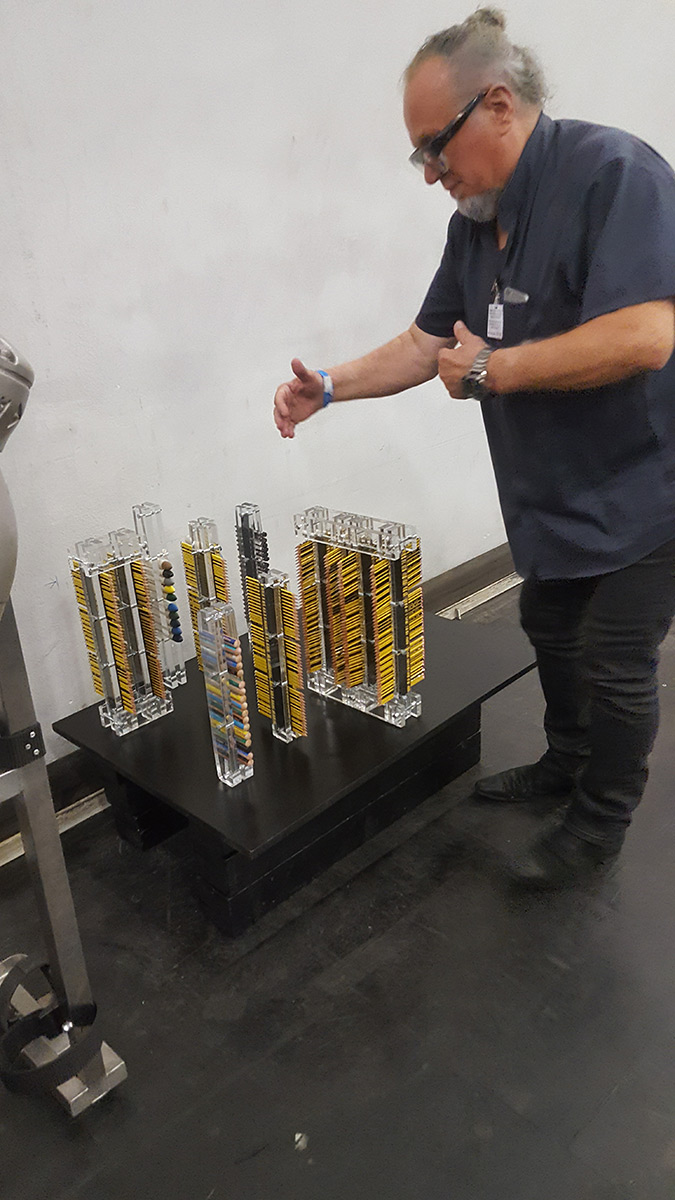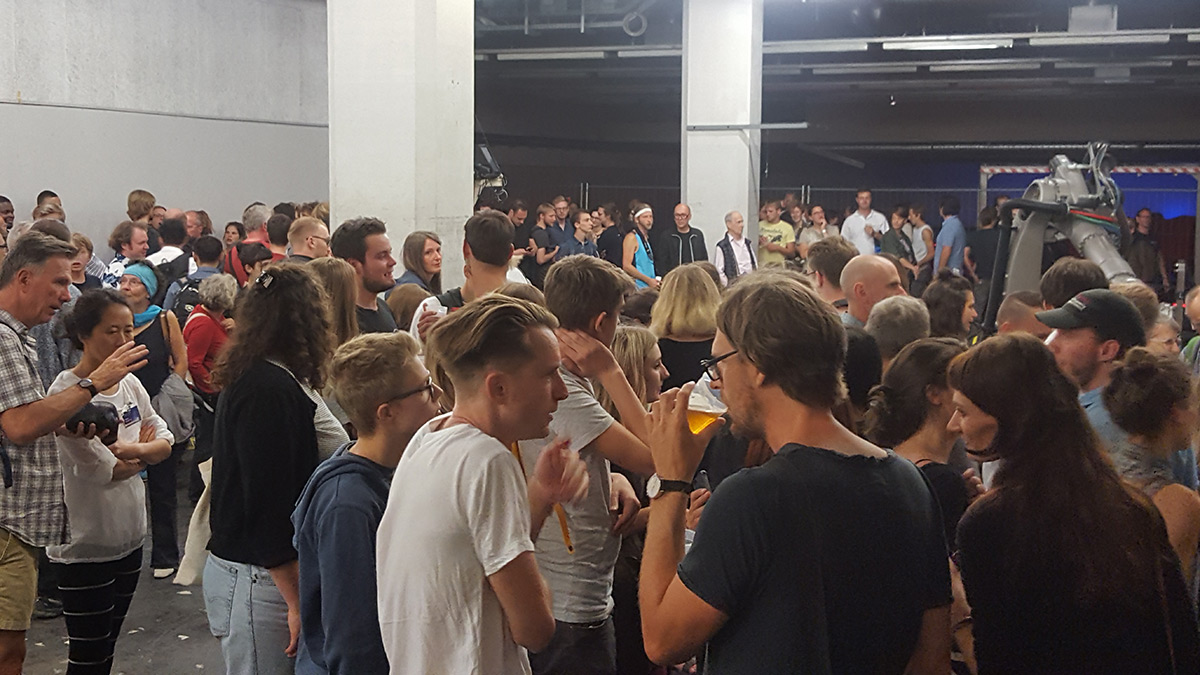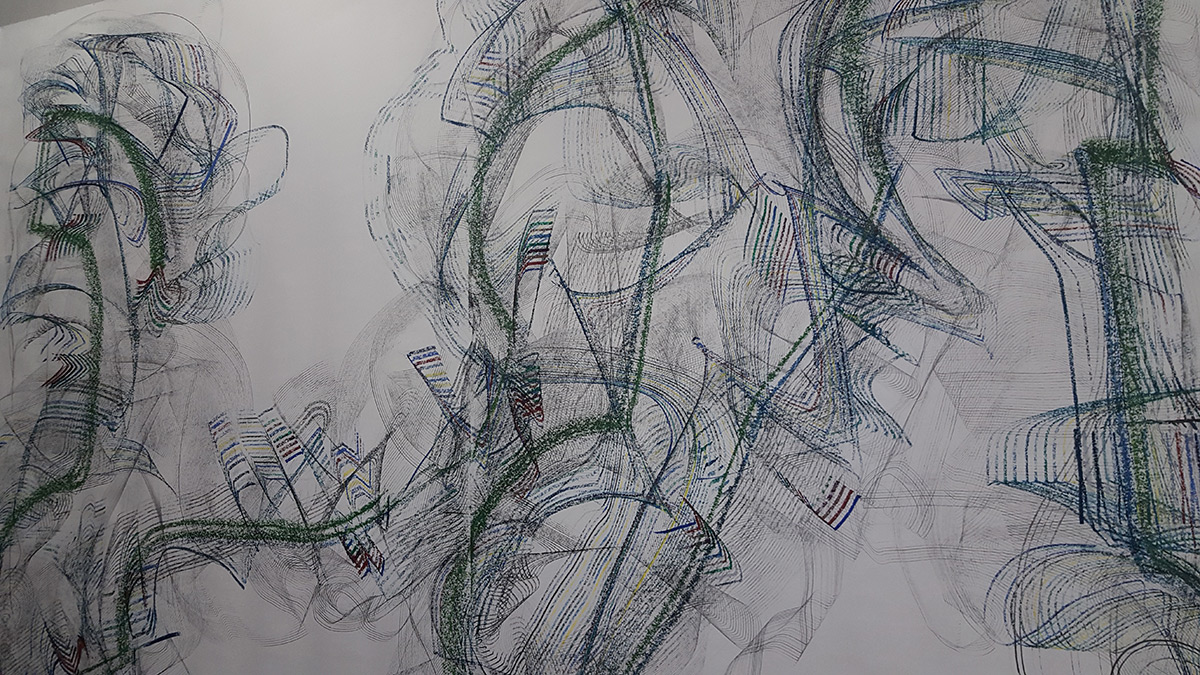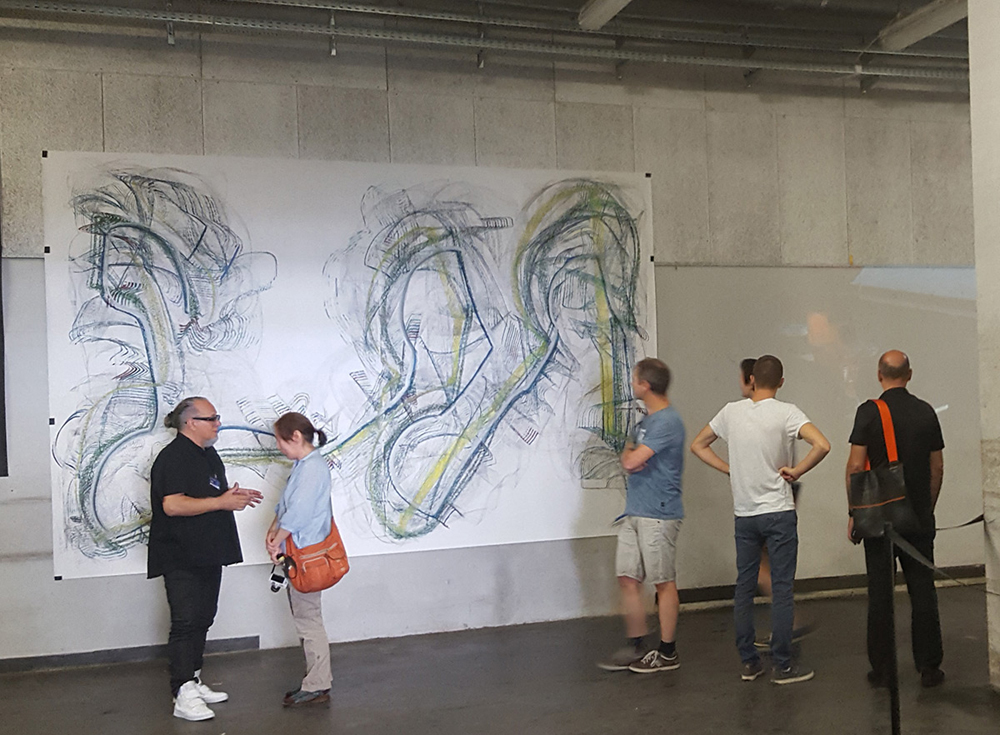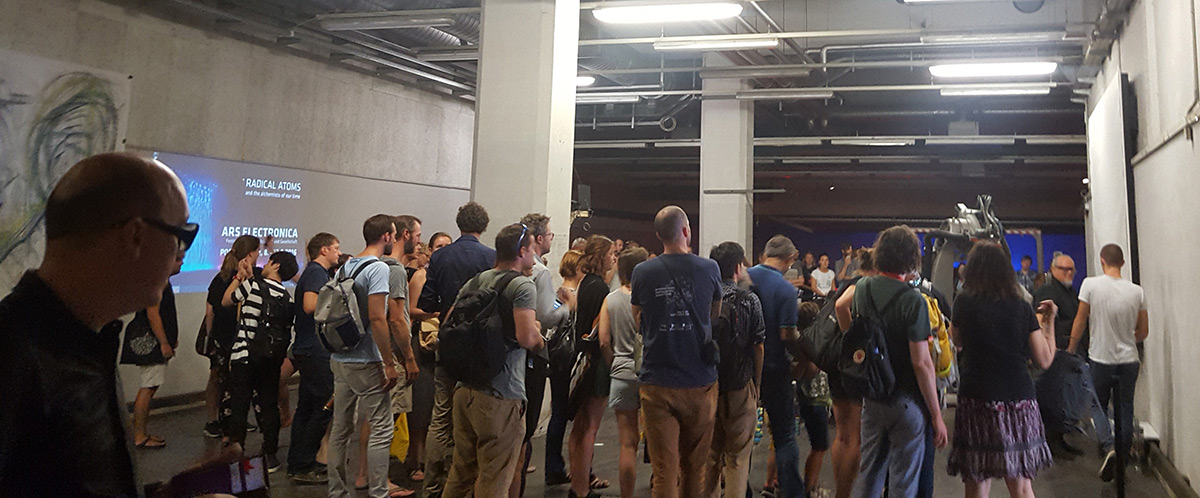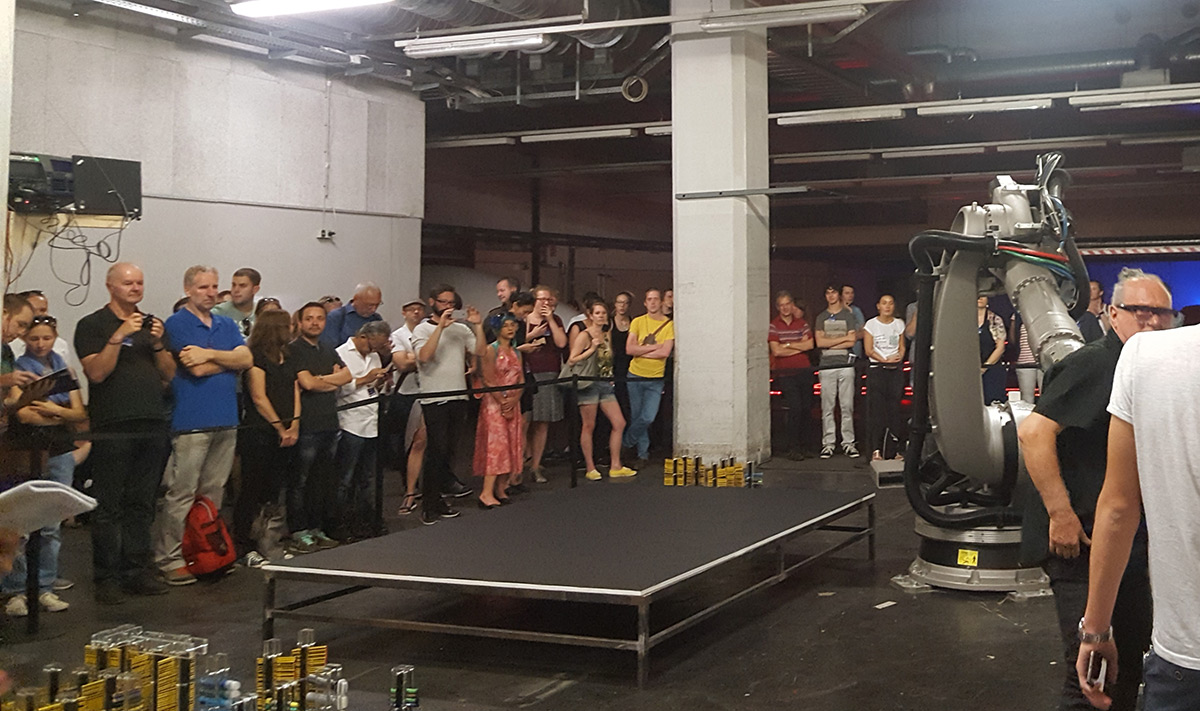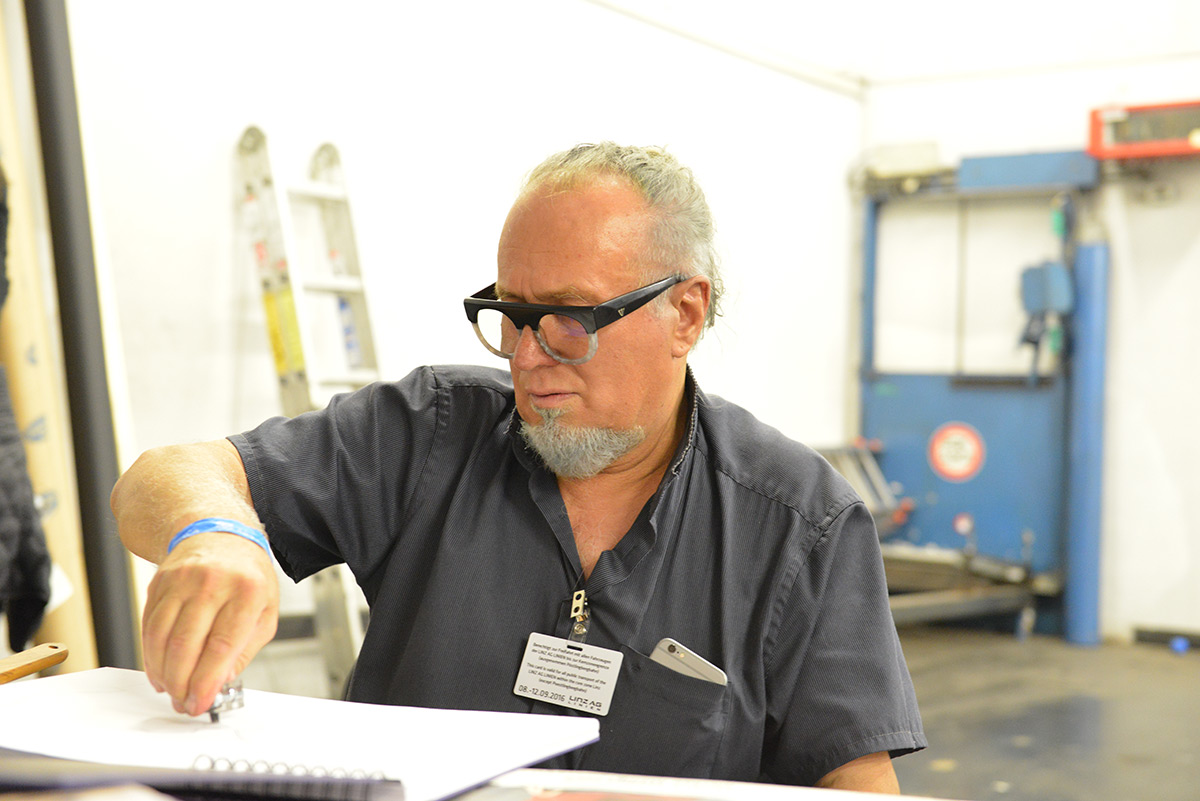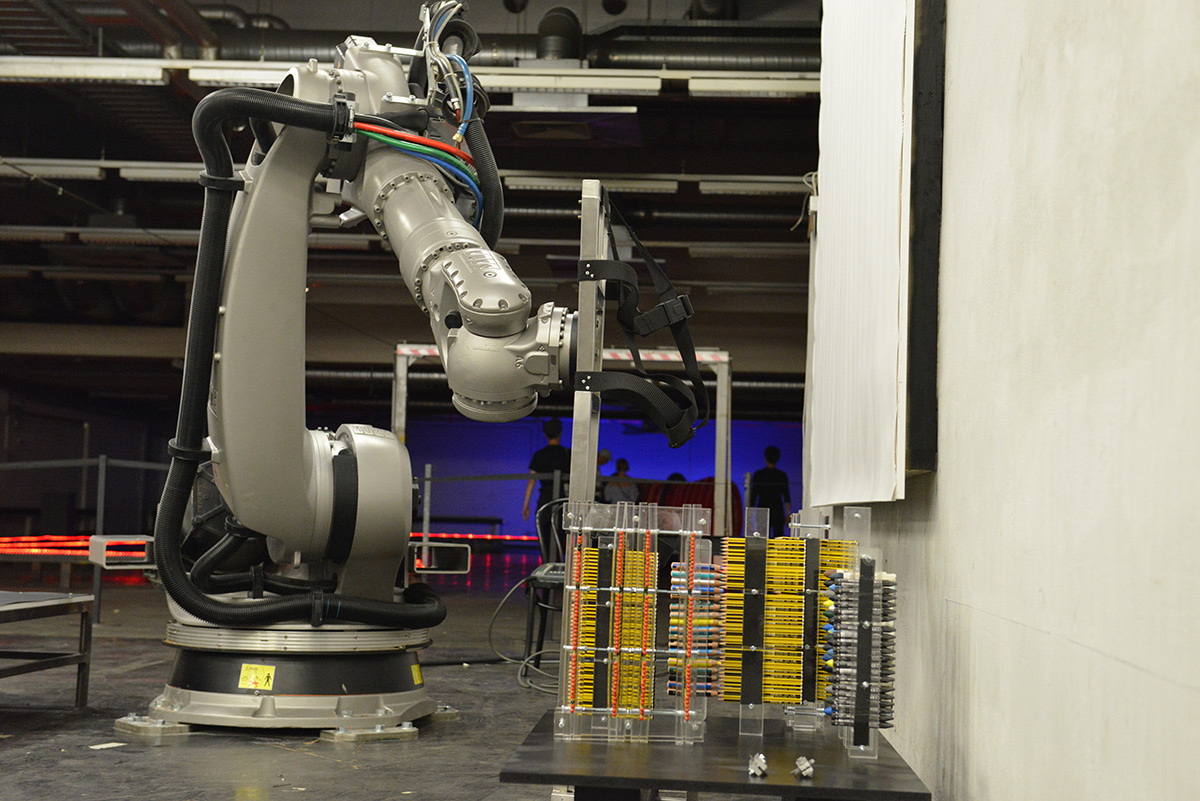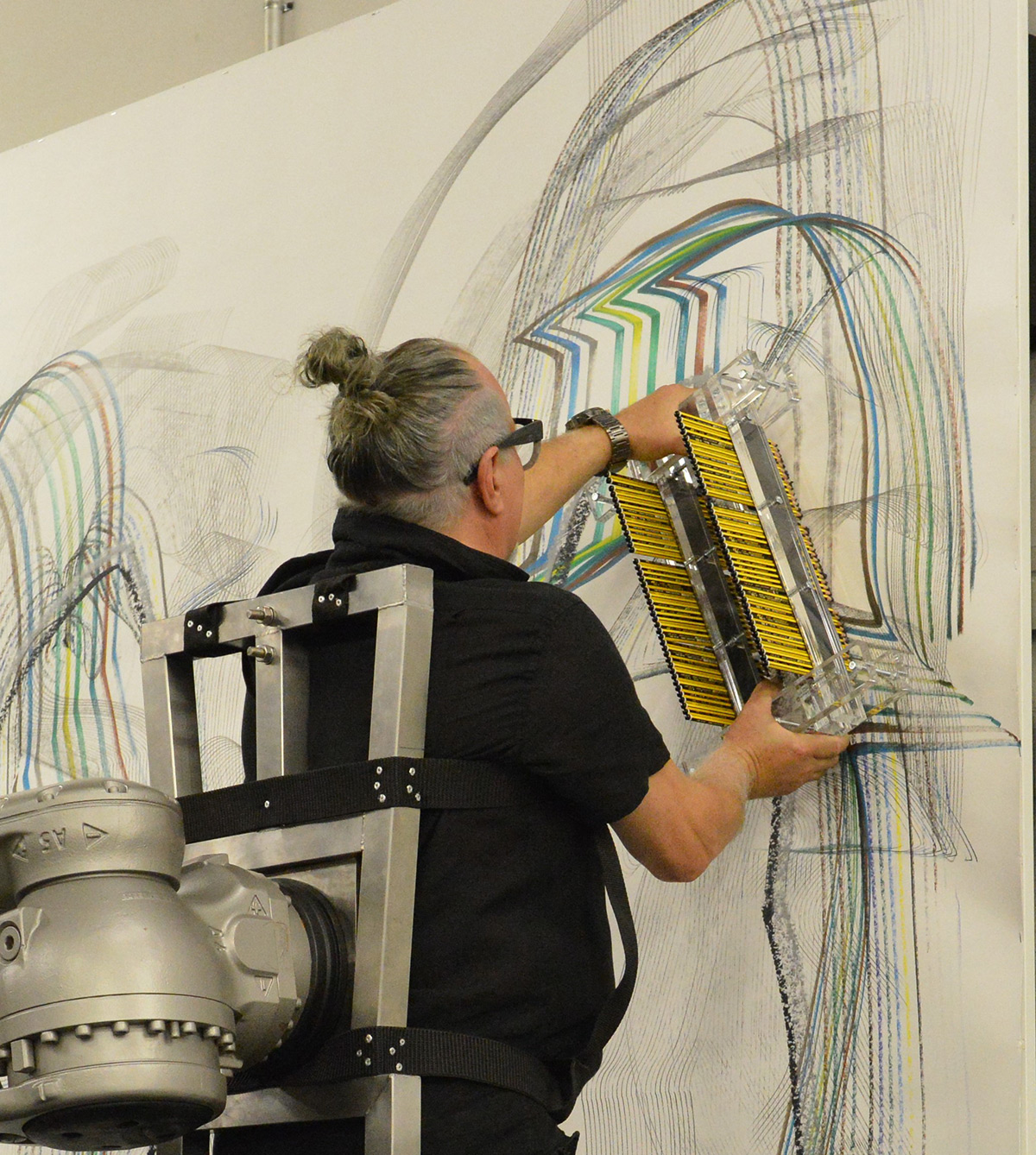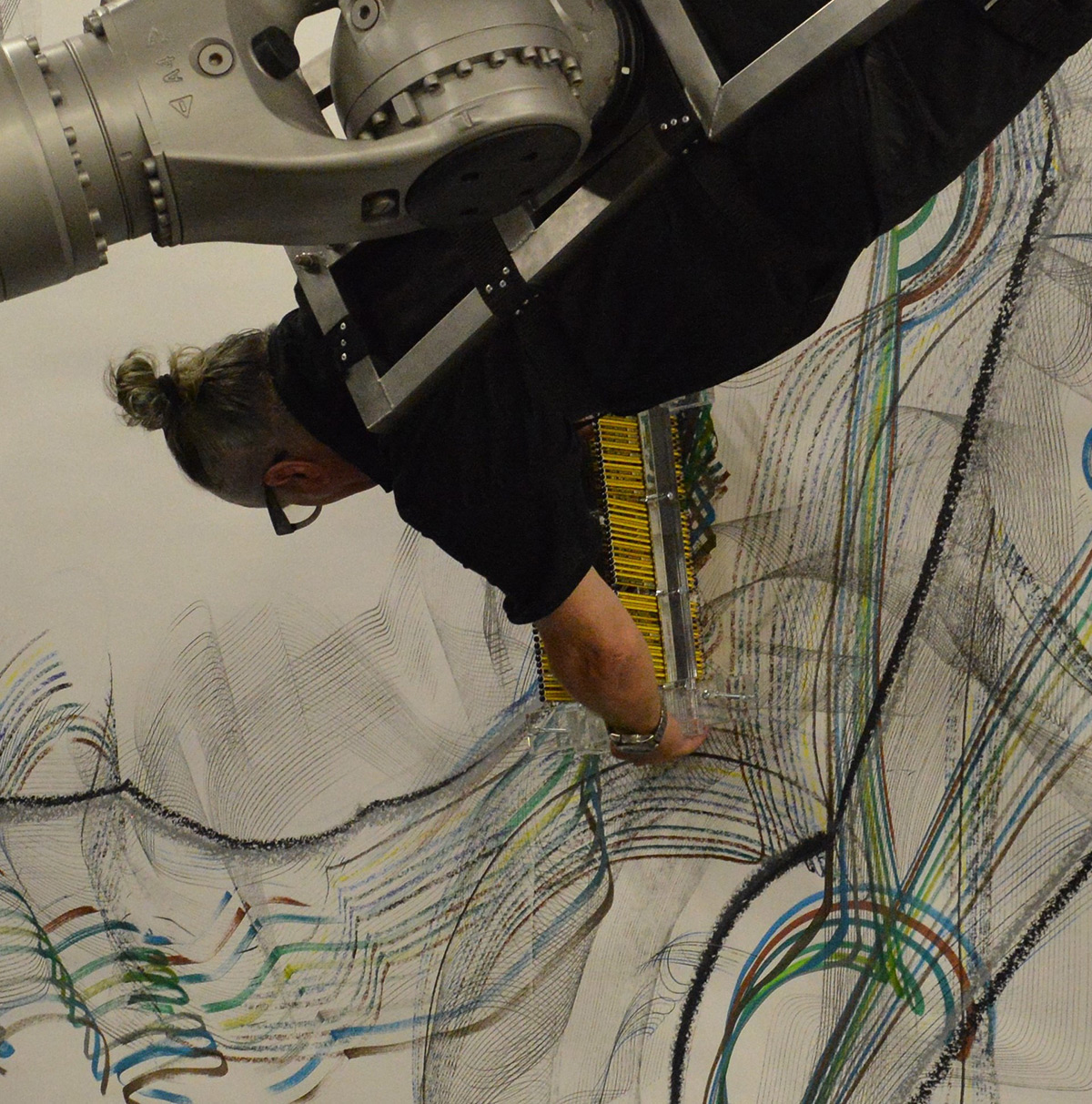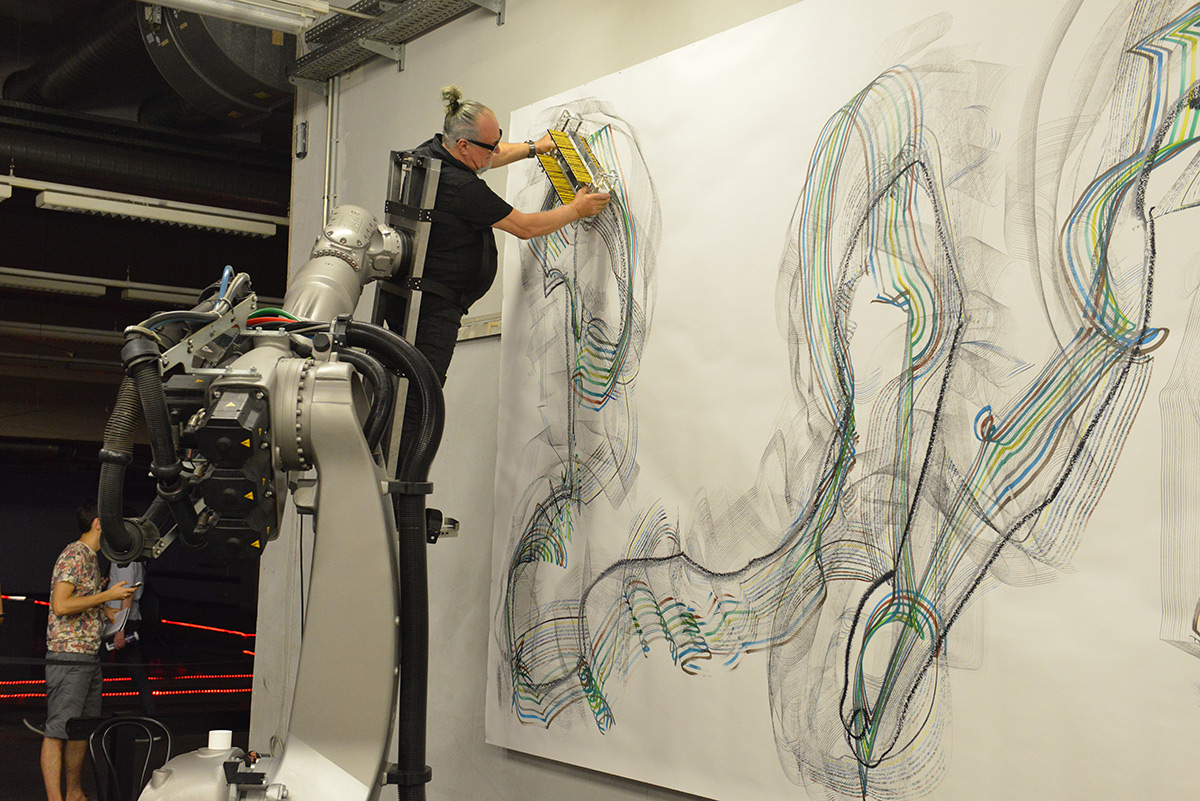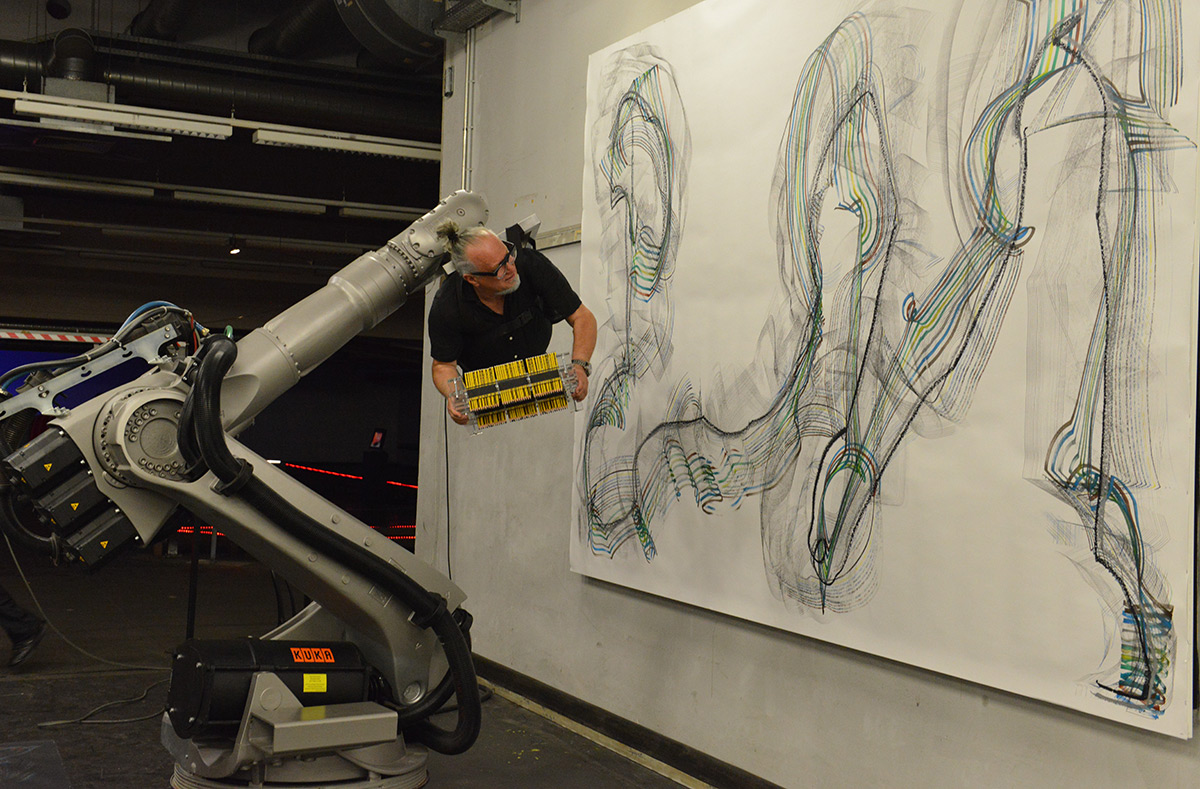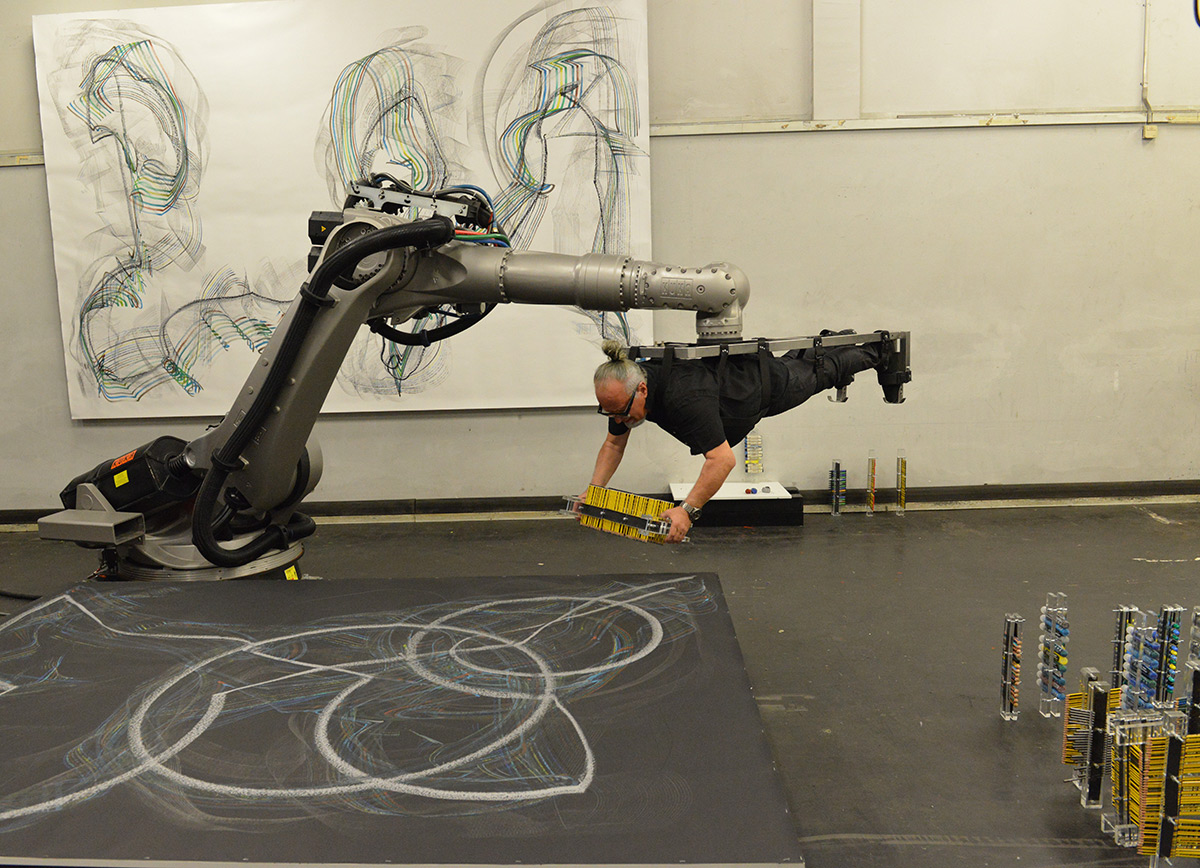RoboAction(s) A1 K1
Performance and Installation
Location: Ars Electronica Center (AEC) in Linz, Austria, Ars Electronica Festival: RADICAL ATOMS and the alchemists of our time, September 8 – 12, 2016
DRAGAN ILICH
“THE SPEED OF LINE
Dragan Ilich has a long history of innovative mark making. It is drawing but not representation.It is line whose aesthetics are generated by its speed, its trajectory and its thickness. It is mark making whose dynamics are generated by the expressive actions of the artist’s body.
We think of pencils when we think of drawing. But this is no ordinary drawing and pencils are not used in an ordinary way. Dragan doesn’t merely use pencils, he is obsessed with pencils.Hundreds and thousands of pencils.His practice is using pencils to draw with, and that extends into using pencils for installation work and for performance.
In fact it’s not so much a practice but a passion. A passion for making marks with pencils. Not with single pencils but multiple pencils clamped together drawing parallel lines that zig, zag and swirl within the task envelope of the artist’s hands and arms, pressed firmly or lightly onto the surface of the paper. Their trajectory and speed varies as the clamped pencils are twisted and turned, bringing the lines together and apart. Lines that begin parallel converge and diverge and cross each other as directions are changed. There is no going back. Only around and over previous marks. His drawing is considered and precise.It’s never random or chaotic, rather complex, calculated and dynamic. The work generates an aliveness. A kinematics of line. The artist operates fast and he operates furiously.
He has also clamped together other things – pens, crayons, paint brushes and spray cans to produce equally compelling drawings with different media. Resulting in lines of different thickness and feel in the relationship to surface and paper. Dragan has also produced impressive wall-sized works also combining these different media.
His installation, “Device N”, was a sculptural monument of sharpened pencils fixed together and rising approximately 3m in height.“Device Z01”, again is constructed from multiple sharpened pencils clamped together, but this time a contorted configuration resting on the floor and against the wall, as if his previous monument of pencils was bent out of shape and laid to rest. His “Untitled” performance saw him buried under a pile of sharpened pencils. And he himself has been a canvas for mark-making with the audience invited to draw on his body with various media like graphite pencils, crayons and felt pens inserted into an electric drill.Skin becomes a surface for inscription, albeit a felt and possibly painful one.Pencils are also used as weapons. “Aesthetic Acupuncture” involved standing against a wall in front of a huge pile of 50,000 sharpened H-5 pencils, visitors to the gallery were invited to throw handfuls of pencils at him. Being struck by sharpened pencils would not be a comfortable experience. And when struck on the face or in the vicinity of his eyes, would have placed his vision in some danger. If the sharpened pencils didn’t hit him they marked the wall around him.
With such objects like“Drawing/Device” shown at the Kentler International Drawing Space, Brooklyn and with this “Drawing Device ZX 35”, thousands of sharpened, red pencils are poked through huge and heavy sheets of black rubber. These are aesthetically beautiful in themselves as gallery objects hung from the ceiling, draped over the wall and resting on the ground. This explosive performance of swinging and thrashing the pencil loaded rubber sheet against the wall results in not the elegant lines produced with his clamped devices, but violent and high velocity lines and marks that impact, bruise and scratch the wall in random but still rhythmic ways.
His work sometimes stray into the political, with installations such as “Electronic Pencils X11” and performances titled “The People I Don’t Like” and“Retribution” where pamphlets of photographs and text of political, and social, science and religious figures are nailed to the floor or the ground or to trees with a bunch of pencils.
There has always been an element of machinic operation in the precision and repetitiveness of his drawing output.Dragan has used customized robots to extend the possibilities of his drawing. With his“Roboactions” projects, a robot produces the drawing that the artist can guide, remotely automating the drawing process and translating the body physiology into a robotic art production. And in “Roboaction A1 K1” a six degree-of-freedom Kuka industrial robot arm robot is programmed to draw on the wall with a custom engineered triangular device holding multiple markers, rotating, and repositioning, resulting in a complexity of continuous lines and interrupted marks. Using the Kuka robot means a capability of art production without fatigue, an art production of repetition, an art production of precision. But yet with the unexpected subtlety that occurs with the ink wiping the color beneath it or ink mixing and blending with previously drawn marks.
Now, with “Roboaction A1 D1” and “DI 2K4” his whole body is connected to an industrial robot arm. The task envelope of his artistic operation is extended, the scale is increased and the speed of the lines accelerated. The resulting mark making is now a combination of programmable robot motion and his intuitive guidance of the clamped media which he holds either against the wall or on the floor. Now it is the trajectory of the body in space that is registered on the wall. The industrial robot arm becomes a prosthesis to position his body above or aside larger expanses of space.
Dragan Ilic was born in Serbia but did his art training at the School of Art in Canberra before moving to New York. He is presently living and working between Belgrade and New York.
STELARC
PDF of ars Electronic Catalog

